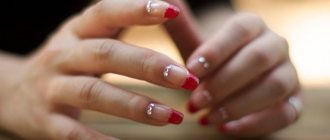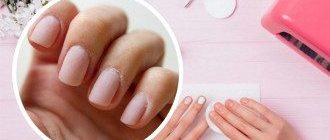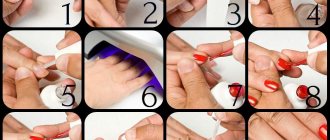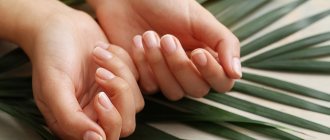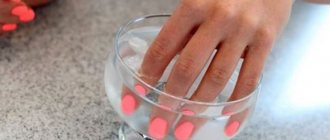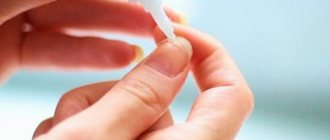Home page » Beauty » Nails
Author of the article
Svetlana Pavlikhina
Reading time: 8 minutes
AA
Mourning stripes under the nails do not make anyone look good. The subungual space needs regular cleansing to keep your hands looking healthy and well-groomed and to protect them from infections. How to remove dirt from under your nails? There are many methods for this, the choice of which depends on the degree of contamination, the length of the plate and the purpose of cleaning.
The importance of hand hygiene
A lot of dirt accumulates under our nails , which contains pathogenic microorganisms.
Reference. A study conducted by the University of Pennsylvania found that the number of germs on the tip of one finger is similar to that on the entire palm.
The area between the growing nail and the skin is the habitat, growth and reproduction of harmful microbes. A favorable environment for them is created thanks to a warm, humid environment and protection from external influences.
It has been experimentally proven that hand washing does not affect microorganisms under the nails, and artificial manicure only increases their content. Therefore, it is important to pay attention to cleaning this area. Regular hygiene measures can not only provide your hands with a well-groomed appearance, but also prevent many pathologies caused by bacteria.
Graphite Grease Removers
Graphite grease is not easy to remove from skin. dishwashing detergent for this purpose to dissolve the dirt. But you shouldn’t expect clean nails, and the skin will be dry after the procedure, which will require additional moisturizing. Gasoline will help wash off graphite grease almost instantly. Although it is better to save this product for various surfaces or clothing, and not for the skin, since this substance has a very negative effect on human tissues and organs. It is better to always have with you a special remover for complex skin stains, which contains much less substances that destroy the lipid layer of the skin than the same washing powder or dishwashing detergent.
Sugar and olive oil
Oil your hands and rub a handful of granulated sugar in your palms. This “scrub” will not only remove dirt, but also cleanse dead skin, and the oil will soften the dermis and nourish it with useful substances.
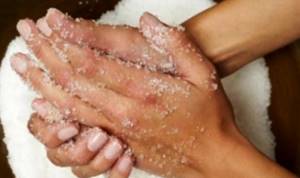
After processing, rinse your hands and apply oil again, let it absorb.
Basic ways to clean up contaminants, including after working in the garden
There are many simple and affordable ways to clean your nails from dirt. You can do this using special tools. Folk recipes that will tell you what to do if dirt gets under your nail will also help.
How to remove using mechanical methods?
The following tools can be used to clean nails from dirt:
- Brush. Used after washing hands or bathing them. The nail plate must be treated both from the outside and from the inside. If you don't have a special brush, you can use a toothbrush.
- Scissors. A sharp tip can be used to remove dirt. Cleaning is carried out with dry hands. It is important to do this under good light to avoid injury.
- A spatula for pushing back the cuticle (pusher). It has straight edges and a rounded shape.
- Scraper. A double-sided tool, with a spatula on one side and a spear or hatchet on the other. The tool is not sharp, so you cannot hurt yourself with it.
- Curette. This is a special device for cleaning the space under the nails, on the sides of which there are pointed edges of various shapes.
Attention! You can also use a regular toothpick. Proceed with caution to avoid skin damage.
The video below shows how to clean your nails with a toothbrush:
Use of household chemicals
To clean your nails, you can use products that can be found in every home.
- A simple way to clean is to rinse your hands with soap, which should be light and natural based. You can buy a specialized powder that can make your nails clean in 5 minutes.
- A preparation for cleaning dentures, which includes soda and citric acid, will be useful. To clean your nails, soak your brushes in the solution.
- Handwash. Many housewives have noticed that when washing things by hand, the dirt under their nails disappears. It is better to use soft washing powder, and then nourish and moisturize your hands with cream.
- Washing your hair works in a similar way - dirt is washed away due to the foam formed by shampoo.
How to clean using traditional methods?
Traditional recipes for cleansing nails are completely safe and effective. The ingredients for them can be found in every home.
Cleansing baths
- You need to prepare a soap solution by adding soap to warm water.
- Place your fingertips there for a few minutes.
Soap softens the dirt , making it easier to remove.
How to get rid of peroxide?
To prepare the solution, boil two tablespoons of water. There you need to pour three tablespoons of dishwashing gel, as well as 100 ml of hydrogen peroxide and 20 ml of ammonia.
How to remove with baking soda?
Baking soda is a simple and effective remedy . You can use it to clean your nails in two ways:

- Heat 250 ml of milk, add 3 tablespoons of grated laundry soap, a large spoon of soda and a glass of boiling water. Place your hands in the resulting liquid for 15 minutes.
- You need to dilute a teaspoon of baking soda in warm water. Dip your fingertips into warm liquid for 5 minutes.
How to wash with sugar solution?
To prepare the solution, you need to mix sugar, milk and liquid soap in equal proportions. Soak your fingertips in this liquid for 15–20 minutes. After this, you can easily remove the dirt.
How to clean with potato starch?
This is an effective cleansing and whitening agent:
- You need to take a liter of water, add a tablespoon of starch, let the solution boil, then cool it.
- Soak your hands in the liquid for 15 minutes.
How to wash with fruit juices?
Attention! Citrus juices can be used to deep cleanse nails.
You can use lemon or other sour fruit.
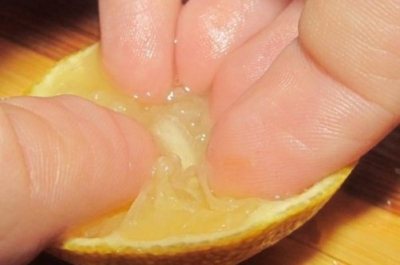
- Squeeze the juice from one fruit and apply to the desired area.
- After 10–15 minutes, you need to wash your hands.
If the dirt is deep, take a lemon, cut it in half and dip the tip of your nail into the pulp. Leave for no more than 15 minutes. After exposure to acid, you need to apply a cream or mixture of vitamin E and base oil to the skin.
With starch

After digging in the soil for a long time, nails may darken, even if they have been thoroughly cleaned beforehand. Therefore, they can be bleached using a simple but effective bath. You need to dissolve 1 tbsp. l. starch in 5 glasses of water. The mixture must be heated. Taking a bath should take up to 15 minutes, depending on the level of contamination. Then each nail should be polished with a cotton pad, cleaning the top dull layer.
The fastest ways
There are express cleansing methods that will be appropriate if the dirt is located very deep, or the procedure needs to be done as quickly as possible.
Soap bath with soda
- Take some water, dissolve a small amount of soap and a large spoon of soda in it.
- Place your hands in the bath for 15 minutes.
After it, dirt can be easily removed, regardless of the tool used.
Lemon acid
Citric acid acts similar to fruit , but it is concentrated, so it has a faster and more aggressive effect.
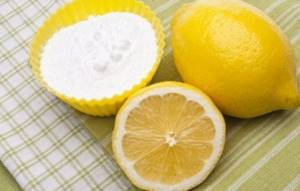
You need to slightly heat 150 ml of water, add a 25 gram bag of citric acid.
The solution can be used in two ways:
- place your fingertips in the liquid for 10 minutes;
- drop the cooled solution onto areas with dirt using a pipette or simply blot with a sponge.
Vegetable solution
Sorrel is useful for cleansing nails. You need to grind it to a pulp and place your fingers there.
Mashed potatoes can be used in a similar way.
Removing oil paint marks
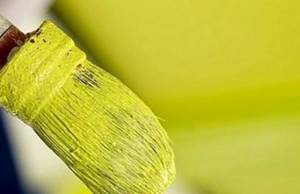
If your hands are slightly dirty, butter or vegetable oil can help solve this problem.
You need to take a small amount onto a cloth and rub the stains with it until they dissolve. This may take some time, but it will not harm the skin. Among chemical products, nail polish remover can help. The same white spirit or acetone. These liquids are usually used if the area of contamination is large. But they can dry out the skin a lot, so after cleansing you need to use a cream.
| If dye gets on your hair, it is better to remove it with oils. |
How to clean your nails after gardening?
In order to clean the skin under your nails after gardening, you can use regular sugar, which perfectly dissolves dirt and allows you to remove stains from grass juice. Sugar is used in combination with any soap, be it solid, liquid or antibacterial. If you use laundry soap, it is first ground on a grater. As for sugar, it can be purchased in both crumbly and solid forms.
The ingredients are mixed in equal proportions, the hands are kept in this solution for 15 to 25 minutes, and then thoroughly washed under running water. After the procedure, steamed hands should be thoroughly treated with iodine to speed up the healing process of the existing torn cuticle and prevent pathogenic microbes from getting under it.
Glycerin will help deal with caustic dirt. It is mixed with hydrogen peroxide in a ratio of 1:5 and applied under the nail plate and on it for 4 to 5 minutes. After this, the mixture is washed off with running warm water and soap, and a nourishing cream is applied to the hands.
We clean country dirt quickly and easily
First of all, it is important to understand that we are talking about types of dirt after dacha work - earth, plant sap, etc. Getting rid of it can be problematic and people are forced to hide their hands for weeks. You can clean your skin yourself after gardening using the following tools:
- hand baths based on herbs, soap, lemon or other products;
- special manicure tools;
- brush and soap;
- restorative creams, lotions.
The main rule is not to leave dirt or traces of plant juice for a long time. The sooner you wash them off your hands after work, the greater the likelihood that no traces will remain.
Restoring whiteness after cleaning
For certain reasons, nails may turn yellow. This may be due to:
- long-term wearing of gel polish;
- smoking;
- regular work with chemicals;
- lack of vitamins and minerals.
Also, the nail plate changes color if you work with coloring ingredients, including berries and some vegetables, without gloves.
The following home whitening methods will help restore your nails to a well-groomed appearance, gloss and pure color:
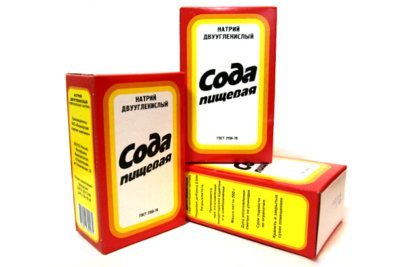
- Soda. There are many recipes for whitening with soda: you can mix it with lemon juice, peroxide, toothpaste, or make baths. The simplest recipe calls for diluting a teaspoon of baking soda with water to create the consistency of toothpaste. The finished composition should be rubbed into the nails, left for 10–15 minutes, then rinsed off.
- Lemon. Also effectively whitens nails. You need to soak a cotton pad with lemon juice and rub it into each nail. To enhance the effect, you can wrap your fingers in cotton wool. Keep this compress for 15 minutes.
- Toothpaste. There are also many recipes with it. You can simply apply a small amount of whitening toothpaste to your toothbrush and brush your nails with it in a circular motion for five minutes. Leave the product on for 15 minutes, then rinse with warm water and apply a cream with moisturizing properties.
- Hydrogen peroxide . Mix 3% peroxide and soda in proportions 1:2. Apply the product to your nails, leave for 5 minutes, massage them for another couple of minutes and rinse with water.
- Vinegar. Excellent for cleaning nails after working with berries, beets, etc. You need to dilute a tablespoon of vinegar in a liter of warm water. Dip your fingertips into the resulting solution, leave for 5–10 minutes, then dry your hands and apply the cream.
- Salt. It is recommended to use sea salt. It makes it possible to return your nails to their natural color. A tablespoon should be dissolved in 250 ml of water. Place your fingertips in the solution for 15 minutes, then rinse it off and use the cream.
- Oil. The well-known castor oil has whitening properties. It is rubbed into the stratum corneum for five minutes. Then you need to blot it with a napkin. Important! Additionally, castor oil will strengthen your nails and saturate them with nutritional components.
You can also use cosmetic brighteners that are sold in stores . They come in the form:
- gels;
- pencils;
- varnishes;
- markers.
Useful if you need to get your nails in order as quickly as possible.
Below is a video about whitening nails at home:
How to tidy up your cuticles after gardening
Just like the dirt sitting deep under the nail, the cuticle also looks untidy after gardening work. Baths with lemon juice, soap, and small manicure procedures will help tidy it up.
You can make your cuticle beautiful on your own as follows:
- Steam your hands (recipes for baths for hands and nails can be found below) and make a bath. Gently pat your skin dry with a towel and apply cuticle cream (oil).
- Massage the cuticle and fingers. Using a special orange stick, carefully peel off the peel.
- Wipe off the oil and apply moisturizer generously to all hands.
This procedure will take you no more than 30 minutes. After such a mini-manicure, your fingers will look well-groomed and beautiful.
Cleaning your nails with baking soda
Most often, the condition of the skin and nails on the hands worsens when exposed to soil and contaminated objects, after which it is difficult to remove soil and other foreign particles. Moreover, if with a single contact you can clean your hands quite quickly, then with regular work in the garden or garden, not only the nails suffer, but also the condition of the skin worsens. The skin on the hands becomes dry, cracks appear, and the nail plates begin to peel off, their color changes, and the appearance of the cuticle deteriorates.
To remove dirt under your nails and improve the condition of the skin on your hands, you need to start dry treatments. To effectively remove contamination, the uneven, damaged ends of the nails are cut off and the free edges are filed. Therefore, before these manipulations, you must first wash your hands well with soap.
In first place in the effectiveness of cleaning fingernails from contamination are procedures with soda.
The method is publicly available and painless. Soda baths remove all impurities, soften cuticles, and moisturize dry skin. The method also allows you to combat the yellowness of the nail plates.
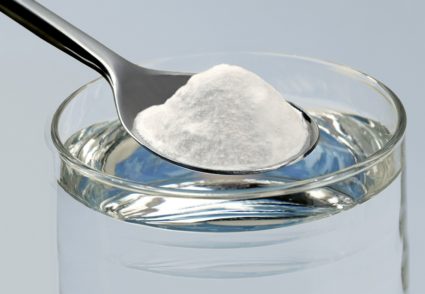
There are two options for preparing a baking soda bath. At first, take table soda and dilute it with water in the proportion of 1 tablespoon of soda with 250-300 milliliters of warm water. The second option suggests adding a teaspoon of hydrogen peroxide to the prepared solution of soda and water. You can also add a teaspoon of lemon juice to improve the effect. Dip your fingers into the prepared warm solution for 5-10 minutes. It is recommended to carry out the procedures with your hands one at a time, so that immediately after steaming you begin to use the nail cleaning technique. Removing stains after a bath is easy and quick.
After the procedure, the skin layer on the hands softens, which allows you to remove interfering hangnails, work with the cuticle, and get rid of dirt. To remove any remaining dirt under the nail plates, you can use wooden sticks or special orange sticks. You need to have time to clean your nails of dirt while they are still wet and steamed. If the contamination is seriously ingrained into the skin layer, then a single procedure will not remove it.
Baby's dirty nails
Adults can clean dirty fingernails themselves. But how to carry out this procedure for a child who does not sit in one place for a minute. After all, children’s nails often become dirty after playing outside. It’s easier with a calm child - he will sit quietly while cleaning manipulations are carried out with his nails. It is best to clean them while taking water procedures, while the child is playing with different toys and the skin becomes soft. Then the dirt can be easily removed with a regular washcloth.
What to do to avoid getting dirty?
To prevent dirt from getting under your nails when planning gardening work or contact with the ground, use the following protection methods:

- Wear gloves. If you work in the garden, use latex products.
- There are special liquid gloves that reliably protect against contamination. They are a special product that needs to be applied liberally to your hands and allowed to dry. This forms a protective film on the skin, preventing dirt particles from getting under the nails. You can use simple liquid soap in a similar way.
- Regular soap is also useful. Before starting “dirty” work, scrape it so that the space under your nails is completely filled. If the surface becomes hard, moisten it with water. A protective crust will form, which you can easily wash off later.
- Another way to prevent dirt from getting in is to apply silicone cream to your hands.
Salt bath
When cleaning your nails, damaged hand skin can be pampered with a salt bath. You need to add sea salt and essential oils to boiled water. You need to keep your hands in it for 15 minutes. The skin will become soft after it, and salt water will help relieve inflammation. It is also possible to clean dirty toenails with its help. The final stage of cleansing is applying a nourishing cream to the skin and nails.
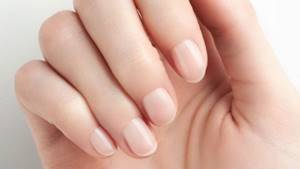
Useful tips
How often do people neglect to use gloves when doing housework? Yes, almost always. They are motivated by what is inconvenient. Nonsense! It's inconvenient to sleep on the ceiling. And now the industry produces a lot of things to make it convenient:
- latex gloves
- finger pads
- silicone creams
- adhesive plaster
So, most likely, it’s a matter of human laziness and unwillingness to create comfortable working conditions for themselves. As they say: a bad head gives no rest to your feet. That is, instead of a well-deserved rest, you will then have to clean your nails of dirt. Or go for a manicure. And this is an additional waste of money.
If the shape of the nails allows, then for additional prevention of contamination, you can carefully sand the skin under them. It is better to do this with a fine file with emery coating, so as not to cause more harm than good.
Try to time your nail cleaning so that it happens in the evening. Or leisure time before bed. Then you will know for sure that there will be no dirty work for today. And you don't have to repeat the procedure several times. After all, no matter what soft tools and gentle products you use, all the same, any cleaning is a microtrauma for the delicate skin on your fingertips.
Never forget about nourishing cream or special oil for cuticles and nails. Regular use of these products allows your nails to remain properly hydrated. This means they are less likely to be scratched. Consequently, smooth nails will be less susceptible to contamination. After work, it will be enough to simply wash your hands with soap, rather than engage in deep cleaning.
By the way, there are recommendations to use clear varnish to protect the nail plate. But few people know that those with long nails can varnish the inner surface of the free edge. This procedure remarkably protects the subungual space from contamination.
Cleaning your nails should become a daily procedure. Even if you didn’t dig in the garden today. You shouldn’t accumulate dirt so that you can scrub under your nails with brushes and sticks on long weekend evenings.
How to remove dirt from under your nails? It turns out to be very simple. The main thing is not to delay the procedure and do it as soon as possible. Otherwise, you will have to work hard later to get your hands in order. Too lazy to do such an unpleasant thing? Then cut your nails as short as possible. And this problem will pass you once and for all.
how to make nails strong at home
https://youtu.be/PldH86hjKfA
Precautionary measures
Regardless of which method you choose to remove dirt from your nails, it is important to follow a number of precautions. This will help prevent finger injuries:
- Don't make your nails too short. This can cause wounds, which in turn increase the likelihood of infection.
- All tools must be used with extreme caution, especially if they are sharp. Cuts are fraught with discomfort and risk of infection.
- When using chemical and plant-based products, try to avoid contacting them directly with your skin.
- Tools must be disinfected after each use. Moreover, disinfection is important, even if you use the devices only for yourself.
- The duration of cleansing procedures should be no more than 15 minutes.
- If there is an increased risk of contracting an infectious disease, it is recommended to trim the stratum corneum short.
Clean nails are beautiful and aesthetically pleasing. Regular cleaning will not only keep your manicure looking attractive, but will also prevent infections and inflammation. You can use both professional tools and folk remedies. In any case, it is important not to forget about this hygiene measure.
When to cut your nails
A healthy nail grows 2-4 mm in a month, so you need to shorten it every week.
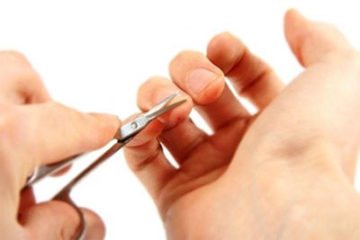
When there is a danger of contracting infectious diseases, it is better to cut the stratum corneum short.
This is why school canteen workers are prohibited from applying or using varnish.
According to sanitary standards, doctors are also not allowed to have long, artificial or painted nails.
Girls should not have a manicure that is too short, as the finger will widen and look rough.
According to the lunar calendar, it is better to cut the plates on the new moon or on the waxing moon. Many girls claim that long nails are less susceptible to contamination.
Nail cleaning techniques
In order not to deteriorate the condition of the skin layer and fingernails, it is necessary to clean them of contamination daily. Often you have to stay in the country for a long time or far from beauty salons; in such cases, simple recommendations will help you quickly remove dirt:
- Every evening you need to wash well and remove dirt from the skin with soap.
- Clean your nail plates from dirt every day using sticks or even a toothbrush.
- You need to use moisturizing nourishing creams.
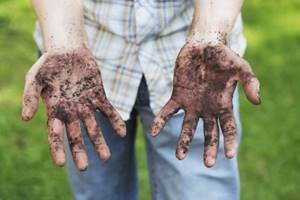
After a hard day of dirty skin and fingernails, you need to take a hot or warm shower with soap or gel and use a hard washcloth. In general, wearing rubber gloves will help keep your nails free from dirt.
If it was not possible to avoid dirt, improvised means will help. Lemon will help remove remaining dirt from the skin and nails. It needs to be cut and your fingers well cleaned in slices. Lemon juice will allow its acid to remove remaining dirt on the skin and fingernails. After the procedure, it is recommended to treat your hands with a moisturizing or nourishing cream.
If the dirt is well ingrained into the skin layer and nail plates, then tooth powder or paste will help out, which can effectively remove it.
Most of these hygiene products contain chemical elements that can destroy bacteria and remove dirt. Apply a small amount of powder or paste evenly to your fingertips and under your nails, wait about five minutes and rinse with warm water. This will help to effectively remove remaining contamination and cleanse the keratinized skin layer on the hands. In addition, the cuticle of the nail becomes snow-white.
Cleaning the nails of a little fidget
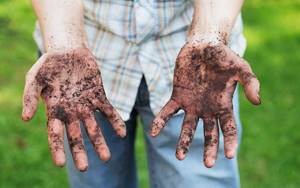
It will be more difficult to do this with a baby. Meanwhile, soil or sand accumulates in them much more actively than in adults. You are lucky if your child likes to sit in the bath - this way the skin is easily steamed, then all you have to do is rub it with a washcloth. But most children are not friendly with water.
You can use special scissors. With their help it is easy to trim your nails and get rid of dirt.
How to avoid dirt accumulation under your nails?
In order to avoid the accumulation of dirt under the nails, you need to wash your hands daily with soap and carry out procedures to cleanse subcutaneous dirt. When working in the garden, you should not neglect the advice of gardeners and always wear latex gloves or at least finger caps when working with the soil.
You should also know that in most pharmacies you can find special silicone creams that ideally help prevent the accumulation of dust, soil particles and coloring plants under the nails.
Reference! Some gardeners prefer to apply adhesive tape to the nail plate. This method can also work, but it must be taken into account that the adhesive plaster reduces the sensitivity of the fingers and does not allow the skin to breathe. After wearing an adhesive plaster for a long time, the skin may bulge and cause discomfort.
To minimize dirt getting on your nails, you can use a special coating on your nails in the form of a protective varnish. This product can be applied both on top of the plate and under it, while protecting the entire structure of the nail. This will really help to avoid contamination, and if dirt gets under the nail, it will be easier to remove it from there.
At home, you can clean your nails with a variety of available products. Depending on the degree of contamination of the nail plate and the nature of the dirt, various traditional methods can be used. To prevent dirt from sticking to your hands, you should take precautions when working with soil, wear protective gloves or lubricate your hands with protective cream.
Why does a matte manicure get dirty?

The matte finish is rough to the touch, so any dirt “clings” to it more easily (they roll off from a glossy finish.
Matte manicure is considered more capricious than glossy, especially if it is done in light colors. Dust and dirt easily settle on such a delicate and velvety coating. It can be stained with food: beets, red peppers, eggplants. Planting flowers, cleaning, using household chemicals - all this destroys the delicate coating and forces you to go ahead for correction.

Is there really nothing that can be done? The masters have several recommendations for those who prefer a matte top.
- Firstly, it is important to do any housework with gloves.
- And, secondly, do not forget about simple ways to clean your manicure

